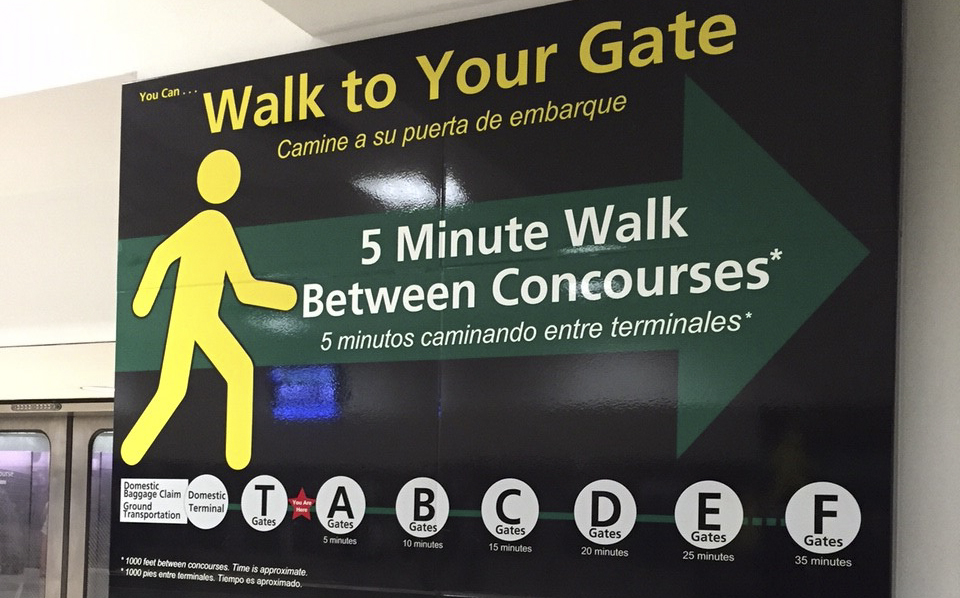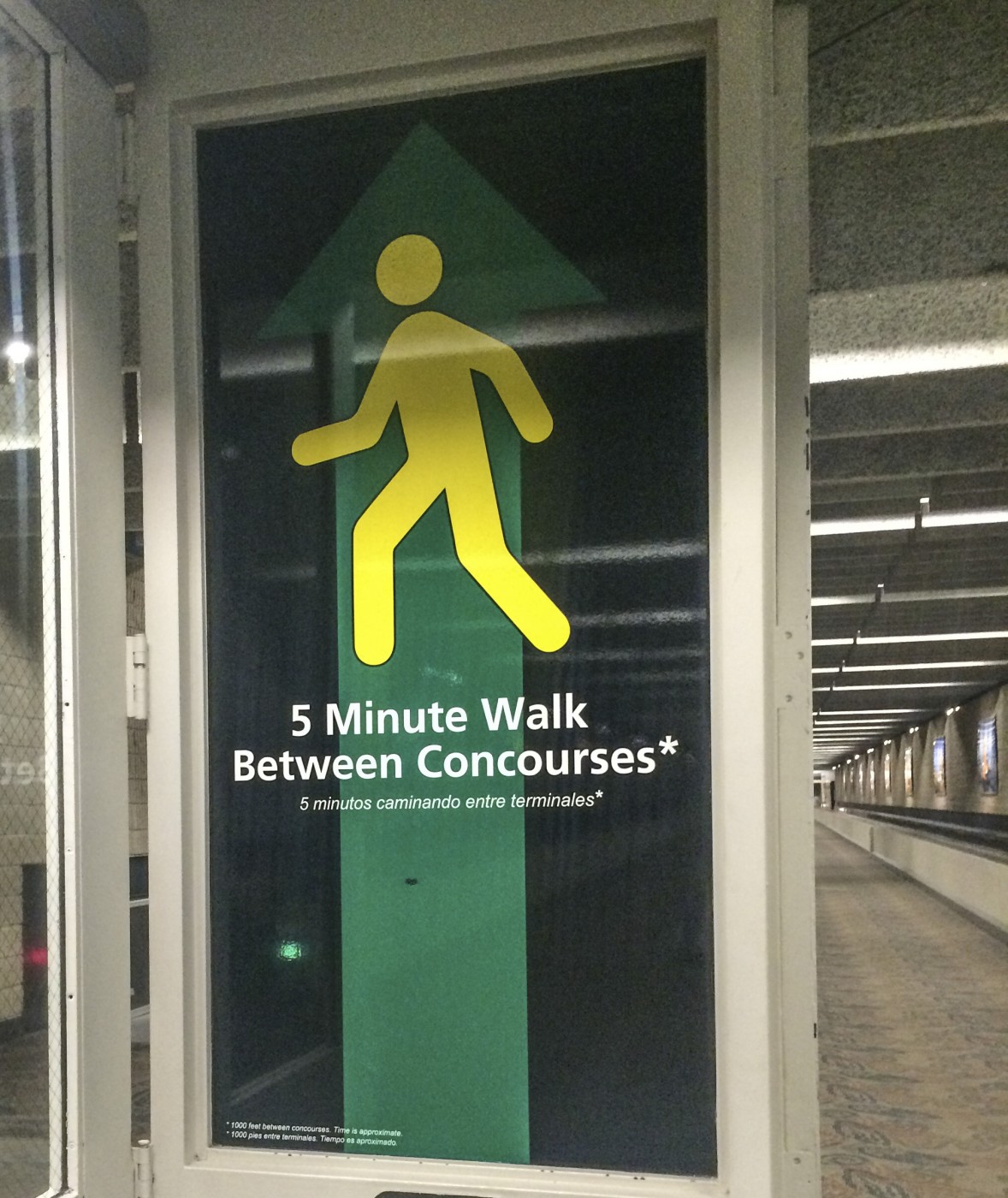You are here
Walk to Fly: An Innovative Approach to Increase Airport Walking in Atlanta

Chances are good that you’ve traveled through Atlanta’s Hartsfield-Jackson International Airport on your way to a business or vacation destination. In fact, with nearly 250,000 travelers passing through each day, Atlanta’s Hartsfield-Jackson International Airport is the busiest airport in the world. And whether you’re traveling for business or for vacation, you have only two choices to reach your departure gate: ride the Plane Train or walk through the transportation mall. With those two options in mind, researchers from the U.S. Centers for Disease Control and Prevention (CDC) realized that there was a tremendous opportunity to encourage physical activity at the airport.
Thanks to a CDC Foundation partnership funded by the Kresge Foundation, CDC created the Walk-to-Fly study in an effort to increase walking in the Atlanta Airport and encourage travelers to make an active choice (walking) rather than a sedentary one (riding the train).

Sometimes all it takes is seeing a sign at the right place, at the right time, to prompt healthy decision-making. In September 2014, the Walk to Fly study posted four strategically-placed wall-mounted signs to encourage walking. Additionally, CDC researchers conducted face-to-face interviews with about 600 travelers to assess barriers to airport walking and physical activity.
Insights from the interviews led to more effective messaging for the airport signage. Many travelers who were interviewed were unaware that walking was an option. They were also unsure of where to walk and how long it would take them to walk to their gate, describing these factors as key barriers to airport walking. By displaying directions to gates and estimated walk times on the signs, thousands of travelers chose to walk instead of ride the train.
That increase is being measured by ceiling-mounted thermal sensors at the Atlanta airport. These monitors are determining how many travelers are now choosing to walk instead of ride the train. When compared to the proportion of travelers choosing to walk before the signs were installed, there has been an increase in the number of travelers walking.
Simple point-of-decision prompts like signs may be an effective way to increase walking in airports and physical activity among travelers. The findings may also apply to venues beyond airports as well. For example, providing people with directions and the amount of time it will take to walk may encourage walking, when it is a reasonable option, instead of riding shuttles, buses, or metros.
So the next time you’re traveling through Atlanta, check for the signs, and join the many travelers who are making the choice to be more physically active by walking to their departure gates.
The Walk to Fly project team would like to thank the Kresge Foundation for their support and funding this project. They would also like to thank the Atlanta Hartsfield-Jackson International Airport, Bernice Bronson, Senior Program Officer, and the CDC Foundation for their support. If you’re interested in learning about how you can support this work, contact Alison Thompson, Director of Public-Private Partnerships, at athompson@cdcfoundation.org.
Ginny M. Frederick, M.S., and Janet E. Fulton, Ph.D. work in the Office of Noncommunicable Diseases, Injury and Evironmental Health in CDC's Center for Chronic Disease Prevention and Health Promotion.